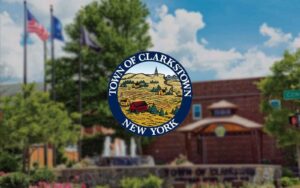Few people today may know the story of Cynthia Hesdra, a remarkable and successful former slave who
resided in Rockland and died the equivalent of a millionaire in 1879. Her home was part of the famed
“Underground Railroad” which had a location in Nyack and was a pathway for slaves from the South
through Newark to Nyack into Newburgh and beyond. Her incredible life story is deserving of greater
recognition and is one we will discuss as part of our reflection during this Black History Month.
Cynthia Hesdra was born into slavery on March 8, 1808, in Tappan. As many will recall, slavery existed in the North, and specifically in Rockland County. While slavery in the South typically involved larger
numbers of slaves living on plantations, in Rockland it was in practice with smaller numbers of slaves,
usually two to four, who served the farming families with larger tracts of land. Gradual manumission
was approved in 1802, which over a twenty-year period freed slaves in New York with slavery officially
ending in the State in 1827. In this climate, Cynthia Hesdra was born to John and Jane Moore. John
Moore was a person of mixed race who was born a slave. He became a partner with the Depew family
and owned a successful mill in Sparkill that would later supply thousands of blankets to the Union Army
during the Civil War. During his lifetime, John Moore became one of the wealthiest businessmen of his
generation living in Rockland.
His daughter Cynthia, although born a slave, became extremely successful. She married and owned
numerous properties in Nyack, New York City, and Bergen County. She and her husband Edward owned
several businesses, including a laundry in New York City and a store in Nyack. She lived in a well-
appointed home at the corner of what is today Route 9W and Route 59 which was known as the
Turnpike. It was in this home that many escaped slaves stayed during their passage on the underground
railroad. A description of this is found in a wonderfully detailed paper written by Lori Martin a
sociologist and historian about the battle for Hesdra’s fortune after her death. Martin writes, “The
runaway slave upon arriving in Nyack would make themselves known at the Hesdra house. At which time they would be fed, given clothes and a place to sleep. They would be hidden during the day at the Hesdra house and at night make their way to the next station in Newburgh, New York. The house could easily be identified as, according to Harniman, it was located on the Southside of Route 9W across from the Odell reservoir. The reservoir was also near the Highland Hose Fire Engine Company No. 5.” Given the secrecy of the Underground Railroad, it is not known how many people stayed at the Hesdra house between Newark and Newburgh stops on the Underground Railroad. Presumably many “passengers” made their way through the Hesdra home to ultimate freedom on the way to Rochester, Buffalo and Canada.
While Hesdra and her husband Edward were remarkably successful business persons and property
owners, this quintessentially American story ends with a tragic twist. Cynthia died on February 9, 1879,
initially without a will available to probate. A battle ensued over her estate estimated of $100,000 which
would be equivalent to nearly $4,000,000 today! Unfortunately, the battle drained much of the value of
the estate as numerous people came forward making claims of inheritance. Eventually, the courts ruled
in Edward’s favor. Ironically, upon Edward’s death a similar dispute over his estate arose which further caused the dissolution of the Hesdra wealth. During the ensuing years, Cynthia Hesdra’s story has
become more widely known. The corner of Depew Avenue and Piermont Avenue has been renamed
Cynthia Hesdra Way. In May of 2018, famous author Toni Morrison, through her foundation, dedicated
and named a bench in honor of Cynthia Hesdra in Memorial Park in Nyack. It was the first of twenty such benches named in honor of famous African Americans of note across the entire country. During this Black History month we recall the life of a remarkable woman Cynthia Hesdra.




